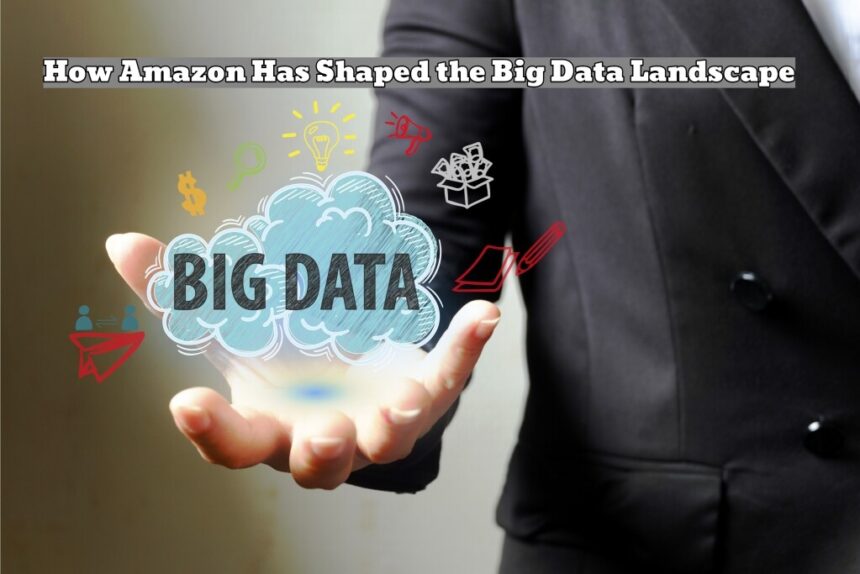If any ecommerce platform has been a proving ground for what big data can do, it’s Amazon. This is a company that, unbeknownst to some, isn’t just an online merchant. It’s a big data behemoth and pioneer that specializes in finding ways to connect customer data with business initiatives.
Amazon Web Services
It didn’t take long for Jeff Bezos, Amazon’s founder, to figure out Amazon could be about more than selling products. In 2006, a little over a decade after the company’s launch, Amazon introduced Amazon Web Services (AWS), a cloud service. AWS is designed to host applications and software for immediate deployment on the web, and is a pay-as-you-go service.
Bezos realized he could take the private cloud infrastructure Amazon was using for its data-based business, and turn it into its own product. It’s paid off in a big way: AWS is responsible for Amazon’s profitability. Amazon’s original ecommerce business model often saw the company losing money for the sake of growth. AWS and big data solve the profitability problem.
AWS is broad-reaching. Because they both have streaming video networks, you might think Netflix and Amazon are competitors, but Netflix is one of Amazon’s case studies for AWS. When you stream a video on Netflix, it works because all of Netflix’s data and software are stored on AWS. AWS is scalable, and basically allows organizations to put big data software to work on the cloud. A cloud service like this wouldn’t be possible, of course, without Amazon’s accumulated knowledge of big data applications.
Recommendation Engines
Nowadays the recommendation engine is fairly standard. Spotify, Netflix, Pandora, all sorts of media outlets and ecommerce sites depend on recommendation engines. Amazon was not the first company to use algorithms for recommendations—think search engines—but it was the company that showed you can use data and algorithms to sell products.
An innovation pioneered by engineer Greg Linden, Amazon uses its own cloud to basically sort through 1 billion GB of customer data and generate 10-30 percent of revenue through predictive analytics. According to DZone, Amazon uses the following types of data to make recommendations:
- Purchase history
- Browsing history
- Product trends
- Social media mentions indicating popularity of products
- Impact of a buyer’s friends in terms of purchases
- Purchases made by people with a similar buying history
This list of qualifiers is very much the prototype list any big data marketer would use to determine personalization for advertising. Any marketing efforts with big data come down to figuring out which data are the best and most appropriate to use. Note that Amazon focuses on products.
Neil Perkin points out that Amazon uses a process called “item to item collaborative filtering.” Basically, “This involves making recommendations on the product level rather than the user level.” To focus on each user would open up too broad of a dataset. By focusing on products, and how user activity relates to products, Amazon introduced a model that many—including Netflix, Pandora, and Spotify—have copied.
Agile Branding
As brands are discovering, big data doesn’t just facilitate product recommendations, it is also useful for determining what a brand should do as it expands. From analyzing data about what type of products and services people want, Amazon has expanded the ecommerce space to include home services and grocery delivery.
By understanding what types of services people want, and where they want them most, Amazon Home Services grew by 20 percent each month within its first year. Amazon Fresh, the grocery delivery service, offers over 95,000 different products that can ship same day they’re ordered. To accomplish this type of feat, you need incredible accuracy with predictive analytics and personalization.
Amazon is now bringing its agility to bear on the brick-and-mortar organic grocery market with its acquisition of Whole Foods. In this space, the ecommerce giant will use big data expertise in a niche where it hasn’t been used to such a thoroughgoing extent before. It’ll be exciting to see the results.
In 2006, AWS was the first example of how big data can facilitate agile branding. Amazon figured out companies need its cloud computing and analytics expertise, and expanded accordingly. Now agile branding and marketing are a big part of any successful startup’s game plan.
Amazon’s biggest breakthroughs have been to show you can use big data as a service, and you can also use big data to personalize your offerings with agility to millions of people. As others follow suit, Jeff Bezos is smiling all the way to the bank.






